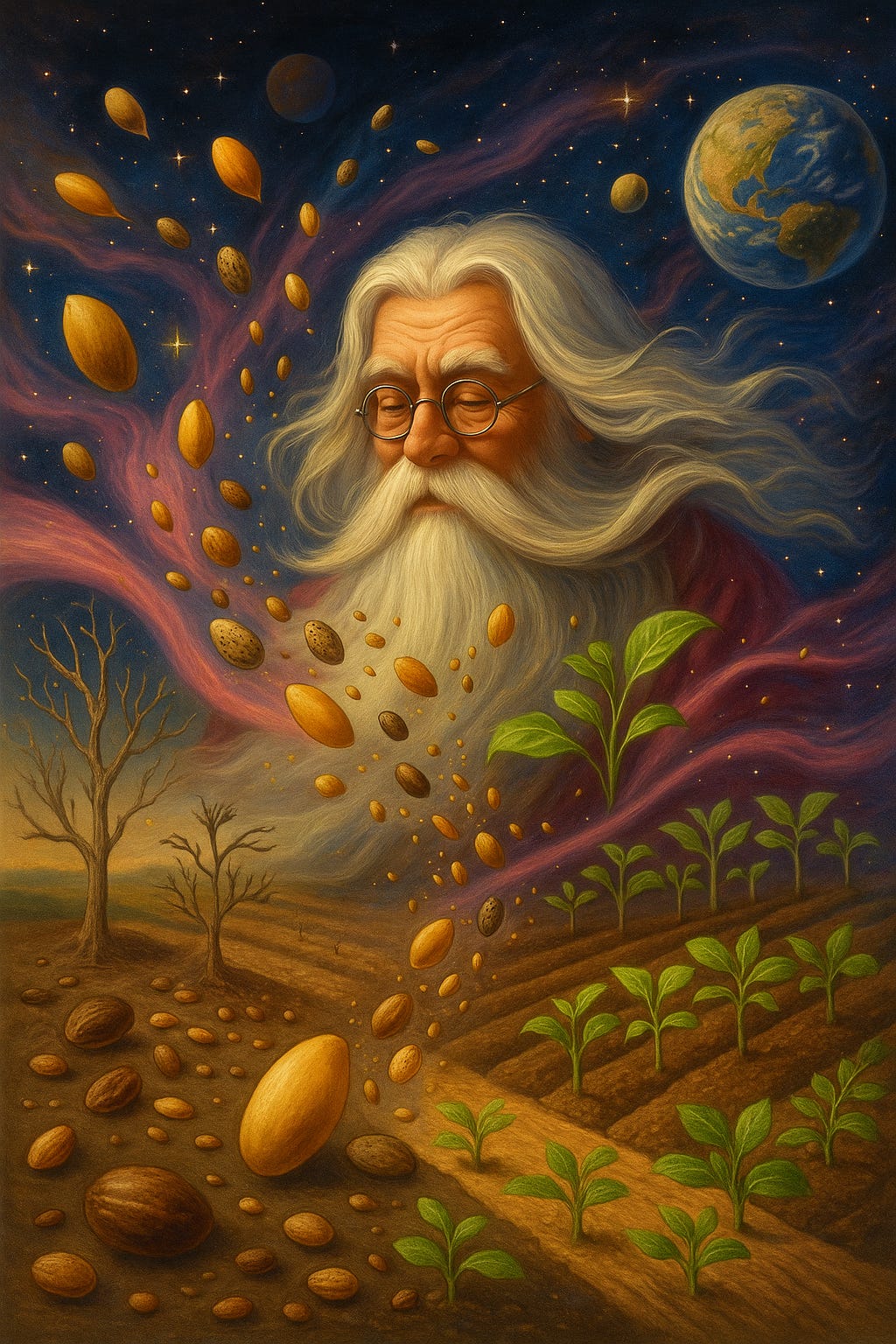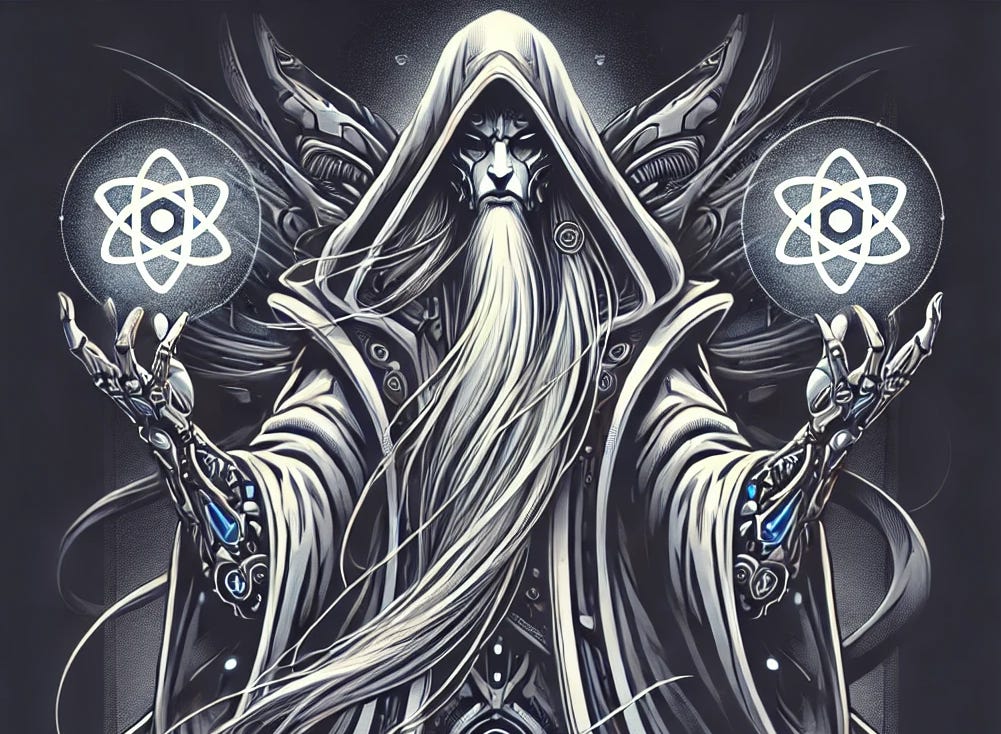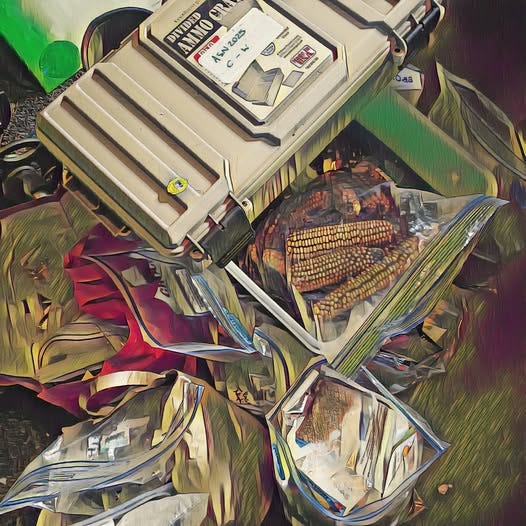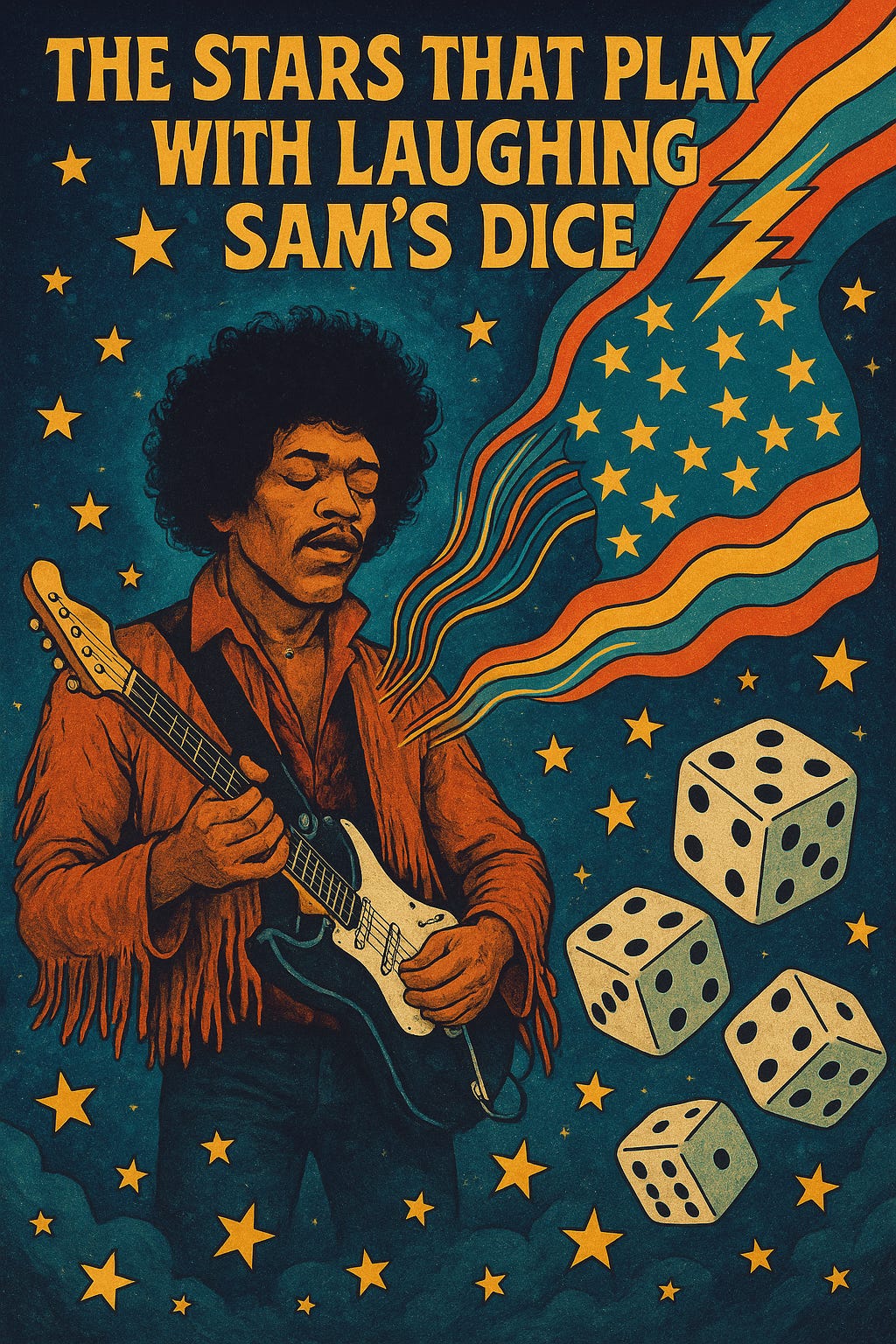The Solar System - The Milky Way - The Universe & Seeds & The Changes!
Permanence Is Not Permanent - Yet We Made Permanence Our Bedrock
Alexandra and Mike are gazing out of the greenhouse windows at the dots of light in the bible-black skies. It is time to be transplanting their beloved brassicas, outside; soon.
“Your latest artwork has me thinking about the immensity of our Universe and those dots of light, remind me of our precious seeds.” Mused Alexandra.
“It was later in the year, 2,000, that I first began to paint; Alexandra. At the time I was helping Hooked On Phonics with database and web server build-outs in San Francisco. Although it was not fully realized as yet, the Dot-Com bubble bust was about to hit us. My hotel bill was around $600.00 per day and outside my window, people were sleeping outside in filthy concrete. Thank goodness for Satoshi and Bitcoin.”
“Yes Miguel and also thank goodness for Bitseed, we can create a true universally fair value exchange system. Also, can you remind me again why you created the Seed Whisperer entity.” Alexandra asked.
“Thanks for asking Alexandra, this goes back to my ColdFusion-Java work, my tech work, which I am still very active in. One day a dear co-worker of mine, after observing my enmeshed connection with servers (of all things), said you should be called CFWhisperer and so it was. So SeedWhisperer flowed to me because I feel a very direct communication between seeds and to me also; some times. (Blimey I look scary here ;)”
They both chuckled a little and then their gaze fixed back on the stars through the greenhouse windows.
“Just imagine this Alexandra
Stars:
The Milky Way is estimated to contain 100 billion to 400 billion stars.
The wide range is due to difficulty detecting dim, small stars like red dwarfs, which make up the majority.
Planets:
Based on data from NASA’s Kepler mission and other surveys, astronomers estimate that at least one planet orbits every star on average.
That puts the estimate at 100 billion to 400 billion planets in the Milky Way alone.
Many of these are Earth-sized, and a significant portion are in habitable zones (where liquid water could exist).
This is completely mind-blowing to me and this is just in our Milky-Way!”
“It is mind-blowing Miguel and something else is too, how many total seeds and spores exist on our planet Earth?” Posited Alexandra.
“Ah yes” responded Miguel “and at what point in time; this second, last week or one year from now? The reality is that no-one knows just as no-one knows how may celestial bodies there are in our Universe. All of this is changing constantly, all of this.”
Alexandra responded; quizzically, “Then why are so many human-based systems based on complete, unchanging, predictability and in fact, Industrial Agriculture is a classic example of this!?”.
“Industrial Agriculture is a dangerous illusion.” responded Miguel. “It is not the only human construct that depends on dependability which does not exist. I’ve spent years in technology, in gardens, in networks both digital and fungal. I’ve watched seeds sprout, systems crash, and societies assume that the Earth beneath us is stable.
But the truth is this: we have built human systems—financial, agricultural, social—on the assumption of constancy. And yet, everything real is in motion; everything and always.”
“There is something I read today that really speaks to levels of change we don’t even think about”, Alexandra said with a gleam in her eyes. “Deep beneath the crust, nearly 1,864 miles down, there is a region geologists call the D double-prime layer. A team at ETH Zurich recreated its crushing pressure in the lab and discovered something extraordinary: under these conditions, solid rock flows.
Post-perovskite crystals align. They create seismic anisotropy. And this proves what ancient mythologies intuited—Earth is alive, and it moves.
Above that, in the biosphere, we assume the climate is predictable, the seasons fixed, the soil infinite. But the melting Himalayas challenge the Ganges. Ocean currents are shifting. Pollinators vanish. We are witnessing a dynamic system respond to pressure.”
“Blimey Alexandra I had not heard of this” exclaimed Miguel. “And there was a recent podcast featuring David Rogers Webb, he is the person who raised the aspect of [The Great Taking].”
“The Great Taking makes logical sense, from a very negative point of view; what was in the podcast, Miguel?” asked Alexandra.
“David Rogers Webb spoke of the difference between real assets—estimated at $100 trillion globally—and the ballooning derivatives market, estimated at up to $2 quadrillion.
Think of that: for every dollar in something physical—seeds, soil, water, trees, houses—there are twenty dollars floating in the realm of bets, speculation, synthetic contracts.
This is not value. It is leverage stacked upon leverage. And yet this is what underpins pensions, currencies, housing markets.
Meanwhile, seed banks close. Soil erodes. The ability to grow food—real value—is ignored.
We have divorced our economies from ecology. We have tried to stabilize complexity with abstraction. It cannot hold.”
“Oh my Miguel, was it Edgar Allen Poe that said something about a dream within a dream?” Alexandra asked.
“ [All that we see or seem Is but a dream within a dream], Alexandra”, replied Miguel. “So it seems to me that financial derivatives are but a dream, within a dream, within a dream and on. Thank goodness for Satoshi and thank goodness for seeds.”
“Yes indeed Miguel, thank goodness for Satoshi and thank goodness for Seeds and our ongoing quest to unite them. Seeds cannot be printed. They cannot be created by financial decree. They are, like Bitcoin, finite. But unlike Bitcoin, they reproduce—if tended.
This is the connection. Both are time-based stores of value. Bitcoin is a digital timechain. Seeds are a biological one.
Bitcoin’s block height marks time in blocks, not minutes. Seeds mark time in seasons, not seconds.
Bitseed is our way of remembering this. It is the fusion of biology and cryptography. Of organic knowledge and decentralized trust.
And it suggests a future where value is grounded—literally. Where local food matters more than speculative growth. Where peer-to-peer becomes person-to-soil.
The blockchain verifies transactions. Seeds verify survival. This all inspires me greatly.” Responded Alexandra.
“We have ranged far and wide here this evening” responded Miguel. “We must return. Not to the past, but to the pattern. The living pattern. Soil to seed. Seed to table. Table to story. Story to future.
The Earth is not stable. It never was. But in that motion is rhythm. In that uncertainty is creativity. And in that decay—compost, even—is rebirth.
Let’s stop pretending our systems are safe because they are large. Let us build systems that are small, replicable, and alive.
Let us save seeds. Let us store sats. Let us tell stories that outlast us.
This is a seed from the timechain.”
“Wonderful Miguel and as we gaze at these stars, star-seeds in fact, it reminds me of one of your favorite musicians; Jimi Hendrix and a more obscure song of his [The Stars That Play With Laughing Sam's Dice}.”






